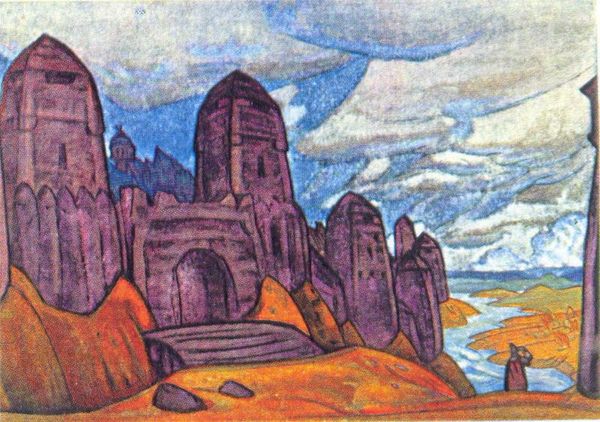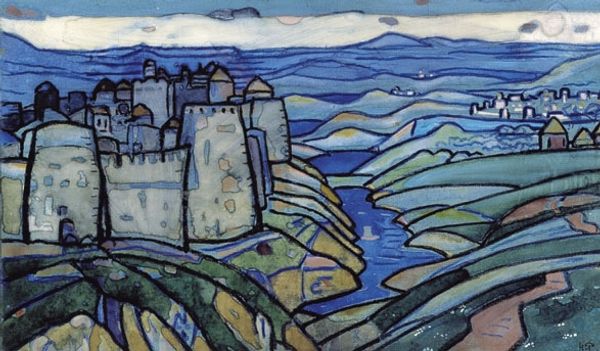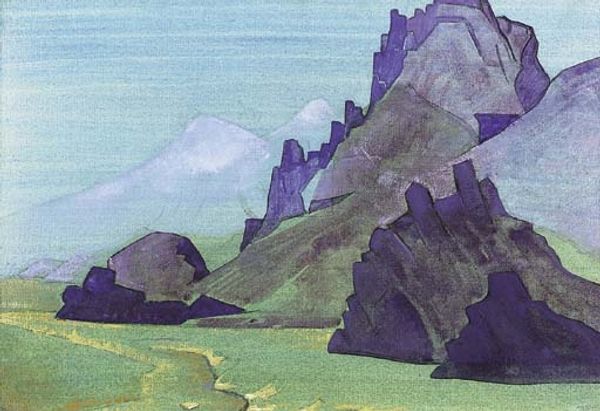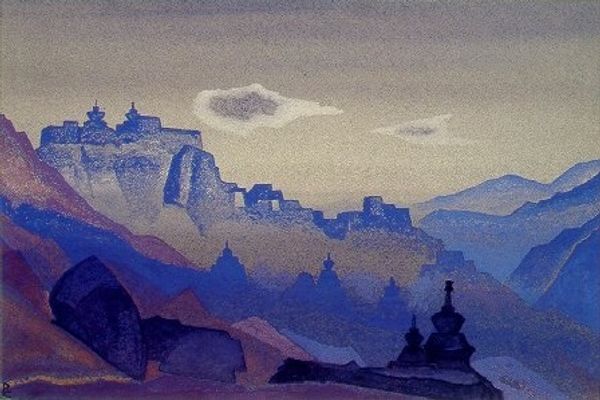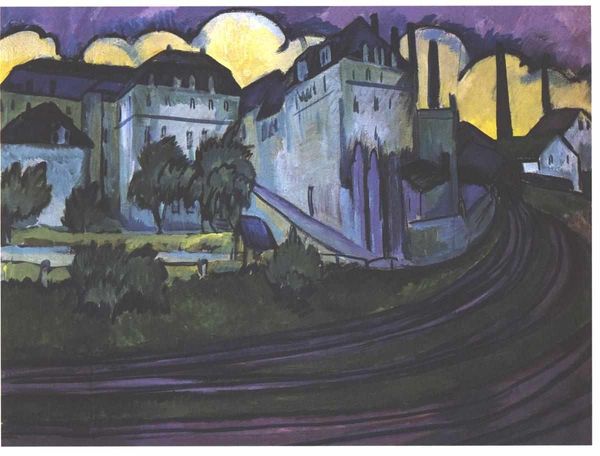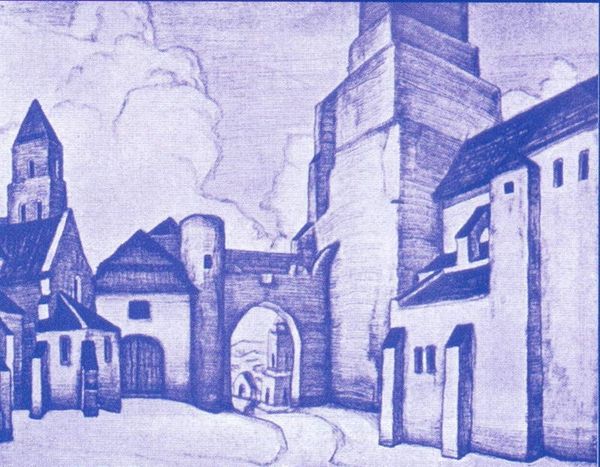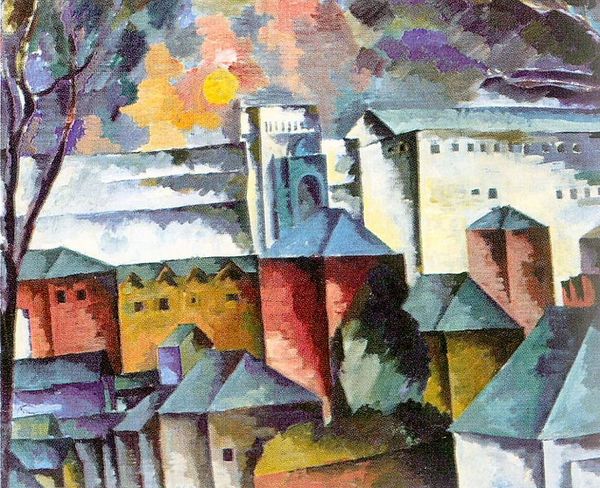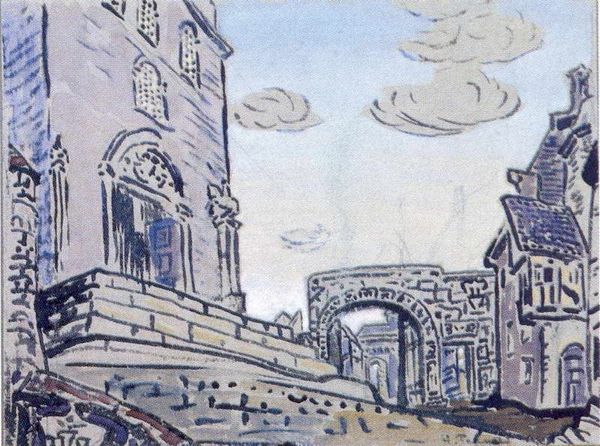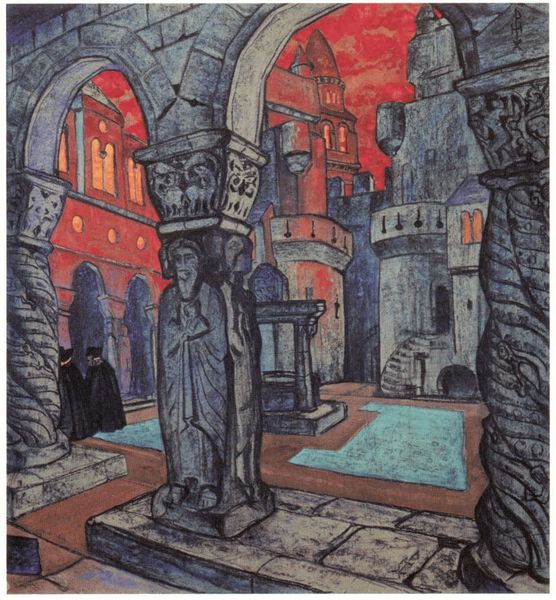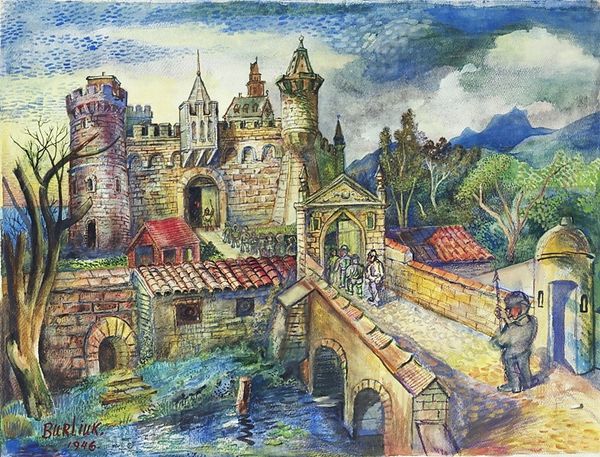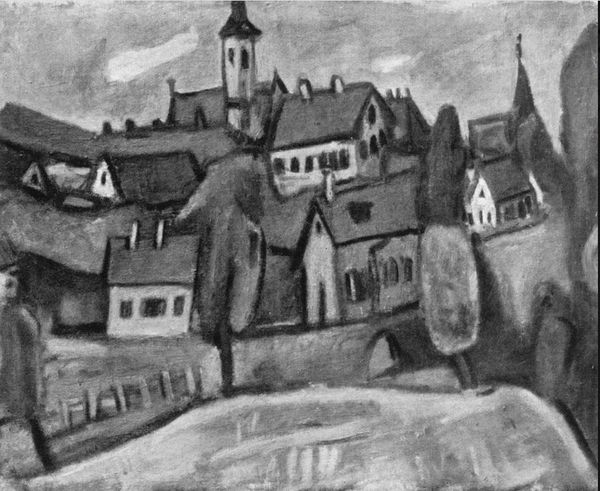
tempera, painting
#
tempera
#
painting
#
landscape
#
geometric
#
symbolism
#
russian-avant-garde
#
cityscape
Copyright: Public domain
Editor: Here we have Nicholas Roerich's "Yaroslavna's Lament," a tempera painting from 1914. The overall mood is so somber, almost oppressive, with that imposing architecture dominating the landscape. What do you make of it? Curator: For me, the power lies in examining the materials and methods Roerich employed. Tempera itself, ground pigments bound with egg yolk, connects to a tradition of icon painting and, frankly, peasant art production. So immediately, Roerich's choice disrupts hierarchies. Look at how he layers the tempera. What does that evoke? Editor: It does feel very intentional, each layer contributing to the solidity of the forms but also highlighting the materiality of the paint itself. Curator: Precisely. The cityscape isn't just depicted; it’s *built* with deliberate, almost labored strokes. Think about the social context: 1914, on the brink of war. Does this not also read as a commentary on labor mobilized, the construction of defenses against an encroaching… something? And consider what is not labored. Editor: You mean like the open sky? It’s barely there, almost hastily done in comparison with those purple geometric towers, and it's really fascinating. The difference between the sky and the towers makes the towers feel even more... weighed down. Curator: Indeed! Think about what the making says about societal priorities and available means. Roerich’s ‘lament’ becomes less about individual grief and more about critiquing how society creates both its monuments and its tragedies. Editor: I never considered it in terms of artistic labour and social context. Now I look at those deliberate, material layers in a completely different light. Curator: Seeing the choices in process and materials can open up entirely new avenues of thought, right? There are choices everywhere when art is created and how materials are arranged by the artist.
Comments
No comments
Be the first to comment and join the conversation on the ultimate creative platform.
